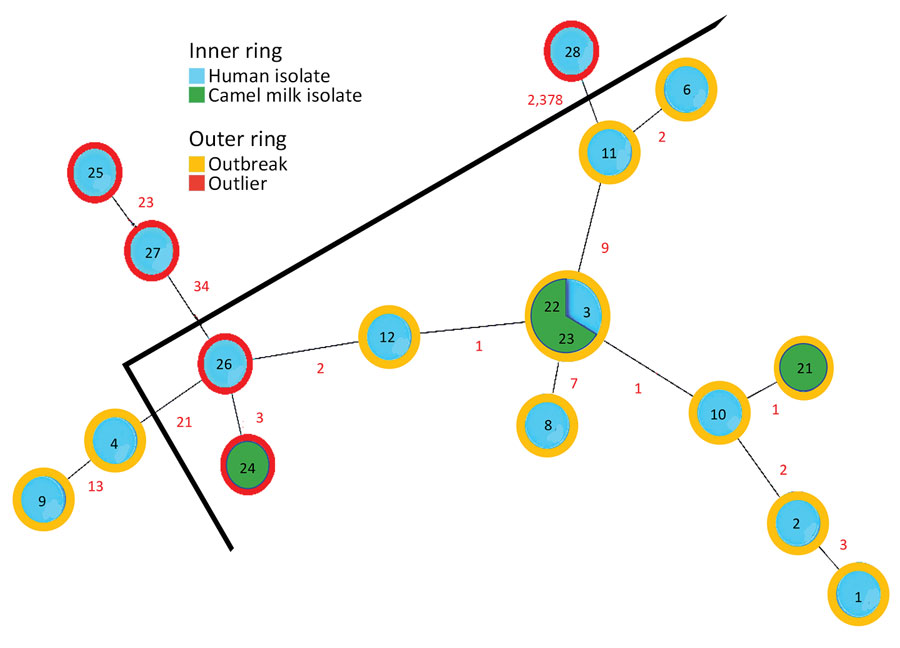Volume 27, Number 6—June 2021
Dispatch
Brucellosis Outbreak Traced to Commercially Sold Camel Milk through Whole-Genome Sequencing, Israel
Figure 2

Figure 2. Minimum-spanning tree of core genome single-nucleotide polymorphisms analysis of Brucella melitensis outbreak traced to commercially sold camel milk, Israel, 2016. The phylogenetic tree includes human isolates, camel milk isolates, and both human and camel milk outlier sequences; numbers within circles correspond to isolate number given in the article text and numbers in red denote number of differing single-nucleotide polymorphisms between isolates. The nodes are colored according to the epidemiologic link (outbreak isolate or outlier), and outer rings are colored according to the sample source (clinical sample or camel milk).
Page created: March 30, 2021
Page updated: May 18, 2021
Page reviewed: May 18, 2021
The conclusions, findings, and opinions expressed by authors contributing to this journal do not necessarily reflect the official position of the U.S. Department of Health and Human Services, the Public Health Service, the Centers for Disease Control and Prevention, or the authors' affiliated institutions. Use of trade names is for identification only and does not imply endorsement by any of the groups named above.